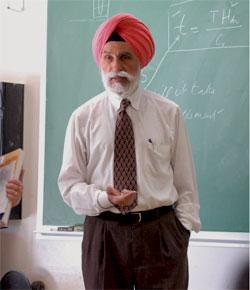Sukhmander Singh:
Alaska Pipeline Engineer, Civil Engineering Professor
In the mid-1970s Sukhmander Singh served as the senior project engineer tasked with evaluating the seismic soil stability of the path in which the 800-mile Trans Alaska Pipeline was to be laid.
From 1974 to 1976, Singh and others conducted an intensive mile-by-mile soil evaluation for the $8 billion project, dealing with sub-zero temperatures, permafrost and the uncertainties brought about by the threat of earthquakes and the fluctuations in crude oil temperature as it passed through the pipeline.
His experience made Singh a big proponent of students getting out of the classroom and into the field. “It’s extremely important for an engineer to have an appreciation for real-life situations,” he says. “Your success lies in your ability to understand the departure between the idealized book knowledge and actual conditions. We also must know how to handle what nature is telling us.”
A member of the civil engineering faculty at SCU since 1986, Singh enthusiastically shares the wisdom of his experience with his students. “I learned a lot about the Alaskan people and the respect we must have for a natural setting whenever we build on something,” he says. “It was a humbling experience to see the beauty and enormity of the space.”
Information for this piece was drawn from a story appearing in Santa Clara Magazine, Spring 2003. Read the full story here.
